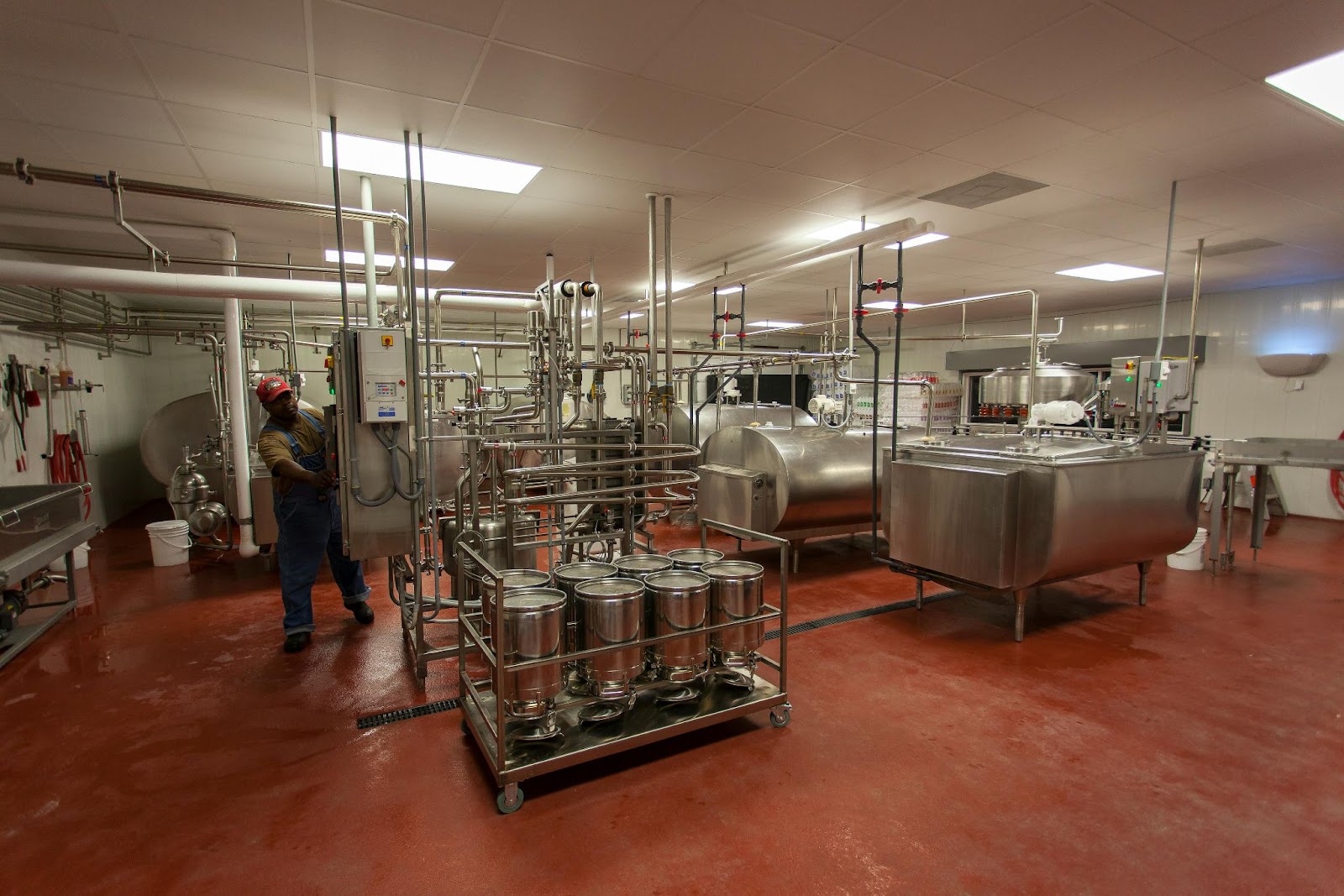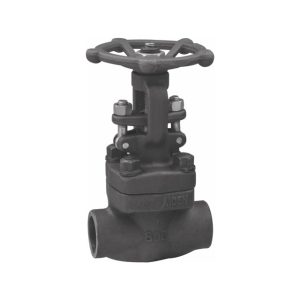Table of Contents
ToggleA butterfly valve is one of the most important industrial valves!
It is used to regulate or isolate the flow of different types of fluids. In this type of valve, the closing mechanism is a disk. The disk rotates to control the flow. This is where the valve gets the name from. As the disk rotates, it looks like the wings of a butterfly.
There are many types of butterfly valves, including wafer-style, lug-style, and rotary valves. These versatile valves are used in a variety of fluid services. They also perform well in slurry applications.
In this article, we will discuss the different types of butterfly valves. Read on to learn about them.
What Is A Butterfly Valve?
A butterfly valve is a quarter-turn rotational device that comes with a rotary disc to control as well as regulate the flow of fluids. This valve is mostly used in piping systems.
In manufacturing applications, a butterfly valve is used to control the flow of liquids. In agriculture, too much water can destroy crops. But using a butterfly valve to control the flow can help farmers avoid this problem. These valves are available in various shapes and sizes.
A butterfly valve consists of a disc that is connected to a stem. The stem is connected to an external actuating mechanism. When you turn the handle, the stem will move, thereby causing the disc to move. When the disc is coplanar, the flow is obstructed, but when the disc is perpendicular, the flow is open.
Butterfly valves come in various different styles. You need to choose the type of valve on the basis of application. Different types of butterfly valves are used for various purposes. Each type of butterfly valve is used for different pressure. For example, a zero-offset butterfly valve is used for low-pressure settings.
What Are The Different Types of Butterfly Valves?
Here are the different types of butterfly valves available in the market. You can use any of these valves as per the type of application.
There are two main types of butterfly valves: centric and eccentric. A centric butterfly valve is centered in the bore, with the disc centered in the stem. This type of butterfly valve has a single seat and is centered in the disc. The stem is located in the middle of the disc, and the seat is at the outer diameter periphery of the valve body. These types of valves have resilient seating, meaning that the seat rubber is flexible enough to seal the flow. They are generally used in low-pressure ranges since the stem is in contact with the disc first and the seat second.
This type of valve uses two counterbalance contrasts to keep the seats of the butterfly valves away from each other. The first offset places the stem near the centerline of the valve body. The second offset moves the stem away from the seat, allowing the valve to close and open with minimal friction. These types of butterfly valves are commonly used in high-pressure applications. Offset butterfly valves have a different geometry from those with a normal shaft position. The sealing components are machined into a cone that has a right-angled shape. This ensures that the stroking is friction-free and that the disc seat can be closed only at the final point of closure. Offset butterfly valves are more expensive than their concentric counterparts, but they’re more durable and can withstand higher pressures.
This type of butterfly valve has three offsets that create a cone-shaped seat and disc, which is often used in applications that require bubble shut-off, hard sealing surfaces, or high temperatures. The type of triple offset butterfly that you need will depend on the application. If you need a valve that is easy to maintain and can withstand high temperatures, consider a triple-offset butterfly valve. Unlike a conventional butterfly valve, the triple-offset type acts like a globe valve. Instead of opening and closing as a normal butterfly valve, the disc moves sideways to allow media into and out. When the disc is closed, the seat will be eccentric to the center of the valve, which creates a cam action. This cam action will prevent the media from leaking through the valve.
A wafer-style butterfly valve is an important component of sanitary and unidirectional systems. This type of valve features a flat valve face and a tight seal to prevent backflow. Various industrial applications make this style of valve ideal, from food processing to water management. These types are also suitable for vacuum and gas applications. Depending on their materials, they can be used for various applications, such as heating, cooling, and vacuum. A wafer-style butterfly valve has a thin disk that directs fluid or substance to the outlet. The body is positioned between the flanges of the pipe and is surrounded by bolts.
A Lug-style butterfly valve is a special type of flow control valve with threaded ears that run the length of its body. These ears are used to tighten the valve against two pipe flanges. The body and flanges are welded to each other. The lug-style butterfly valves are mainly used in high-pressure services and can withstand very high temperatures. They are also best suited for applications where a large amount of thermal expansion and contraction is necessary. A Lug-style butterfly valve can be used for both end and outlet applications.
- Double-Flanged Butterfly Valve
A double-flanged butterfly valve is a spool valve with two flanges on one side. It is a popular type of butterfly valve and is used in large-diameter applications. A double-flanged butterfly valve is typically used for water flow regulation and flow sectioning. The double-flanged butterfly valve is 100% water-tight and requires no gaskets for installation. They are typically installed between flanges on the ends of a pipe. There is no gap between the valve and the flanges, which allows the valve to operate with low head loss and minimize the amount of water lost.
- Butt-Weld Butterfly Valve
This type of butterfly valve is an excellent choice in many industrial and process applications as it is directly welded between pipes. The valve is known for its low flow resistance and large opening area, allowing for an even flow in a wide variety of low viscosity liquids. The valve also has a reversible flow direction, making it ideal for reversible applications. This type of valve is often used for high-pressure services.
What is the Most Common Use of a Butterfly Valve?
Butterfly valves are often used for applications in confined spaces due to their compact design.
In contrast to gate valves, butterfly valves offer versatility, allowing for throttling or regulating flow, and they can function in both fully open and fully closed positions.
Notably, the pressure loss experienced in a butterfly valve is minimal compared to that in a gate valve.
Common Applications of Butterfly Valves
Butterfly valves are widely used across various industries due to their versatile design and functionality. Common applications include:
HVAC Systems
Butterfly valves are widely used in Heating, Ventilation, and Air Conditioning (HVAC) systems where they regulate the flow of air and water.
Their ability to function in both throttling and fully open/closed positions makes them essential for maintaining optimal HVAC performance.
Water Treatment Plants
In water treatment plants, butterfly valves play a crucial role in controlling and regulating water flow during different treatment stages.
Their modulating capabilities ensure precise control, contributing to efficient water treatment processes.
Chemical Processing Industry
The chemical processing industry relies on butterfly valves to manage the flow of various chemicals through pipelines.
The valves’ adaptable design allows them to handle different chemical substances, contributing to smooth chemical manufacturing processes.
Oil and Gas Sector
Butterfly valves are integral in the oil and gas sector, particularly in pipelines where they control the flow of oil and gas.
Their reliability and effectiveness make them valuable for fluid regulation in the transportation and distribution of energy resources.
Power Plants
Power plants use butterfly valves for fluid control, especially in managing steam and cooling water.
These valves enhance the efficiency of power generation processes by ensuring precise fluid control.
Marine Industry
In the marine industry, butterfly valves find applications in regulating fluid flow within ship systems.
Their adaptability and reliability contribute to the overall efficiency of maritime operations.
Pros of Butterfly Valves
1. Compact Design
Butterfly valves are known for their compact design, making them well-suited for applications where space is limited.
Their space-efficient construction allows for easy installation in tight spaces.
2. Cost-Effective
Compared to some other types of valves, butterfly valves are often more cost-effective.
Their simpler design and fewer components contribute to lower manufacturing and maintenance costs.
3. Quick Operation
Butterfly valves can be quickly opened or closed, providing efficient flow control.
This rapid operation is advantageous in applications where quick adjustments to fluid flow are necessary.
4. Versatility
These valves are versatile and suitable for a wide range of applications.
They can be used for on/off service as well as for throttling or modulating flow, adding to their flexibility.
Cons of Butterfly Valves
1. Limited Control Precision
While butterfly valves offer versatility, they may lack the precision required in some applications. In situations where precise flow control is crucial, other valve types, such as globe valves, may be more suitable.
2. Pressure Limitations
Butterfly valves may have limitations in handling high-pressure applications. In scenarios with high-pressure systems, alternative valve types designed for such conditions might be preferred.
3. Susceptible to Cavitation
In certain conditions, butterfly valves can be susceptible to cavitation—a phenomenon where the formation and collapse of vapor bubbles occur.
Cavitation can lead to valve damage and increased noise levels.
4. Not Ideal for Slurries
In applications involving slurries or fluids with solid particles, butterfly valves may not be the optimal choice.
The design of these valves may result in increased wear and reduced longevity when handling abrasive materials.
Key Takeaway
Butterfly valves come in various types, including resilient-seated, high-performance, and triple-offset designs.
Resilient-seated butterfly valves are common in water applications, high-performance valves are versatile for different industries, and triple-offset valves excel in demanding conditions.
Each type suits specific uses based on performance requirements and environmental factors.
In various industrial settings, butterfly valves offer a versatile solution for fluid control.
Whether in HVAC, water treatment, chemical processing, oil and gas, power generation, or marine applications, these valves play a crucial role in ensuring optimal system performance through precise flow modulation.










